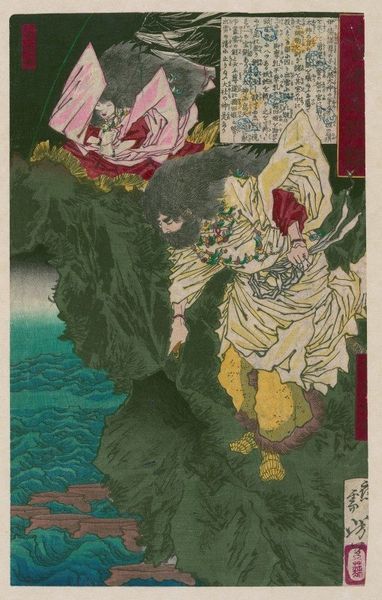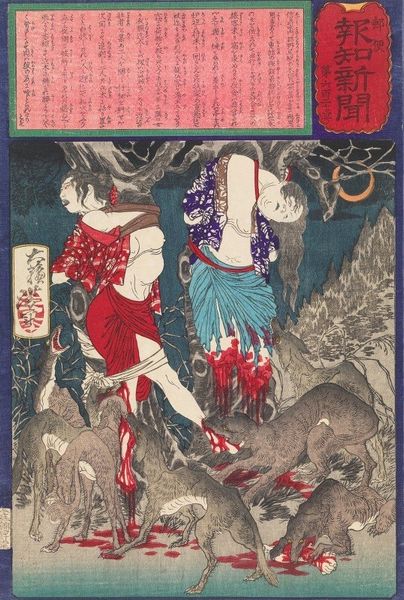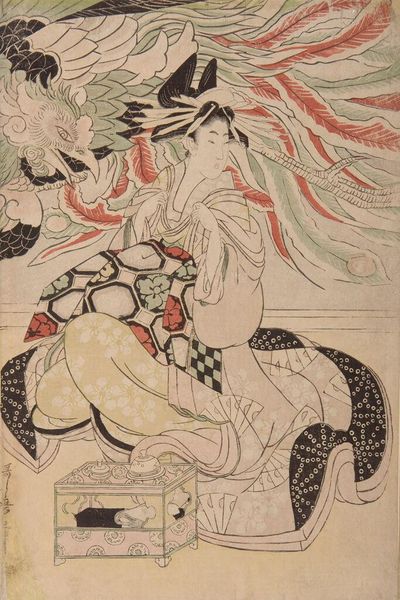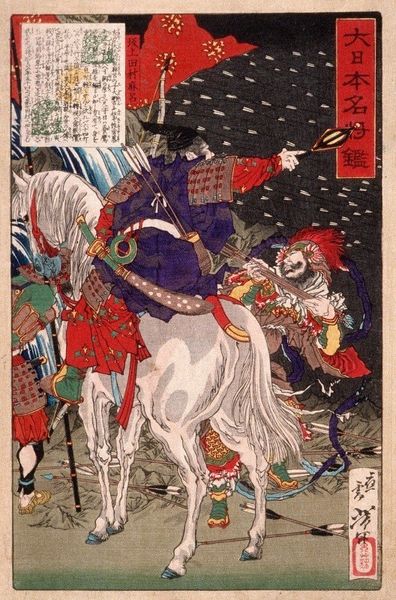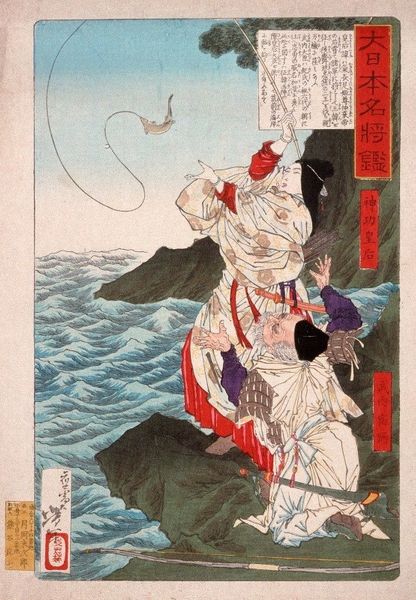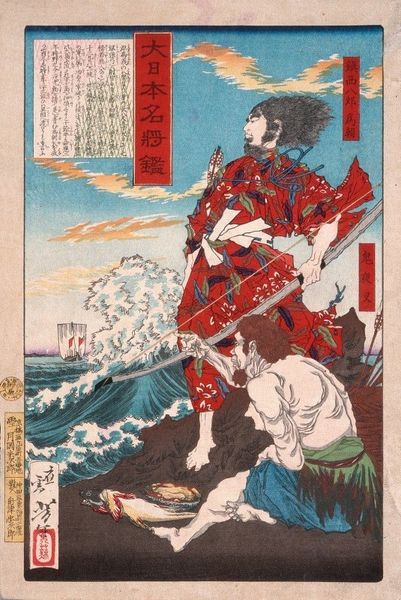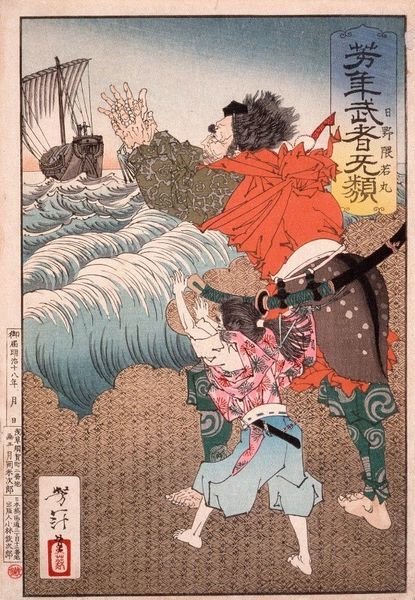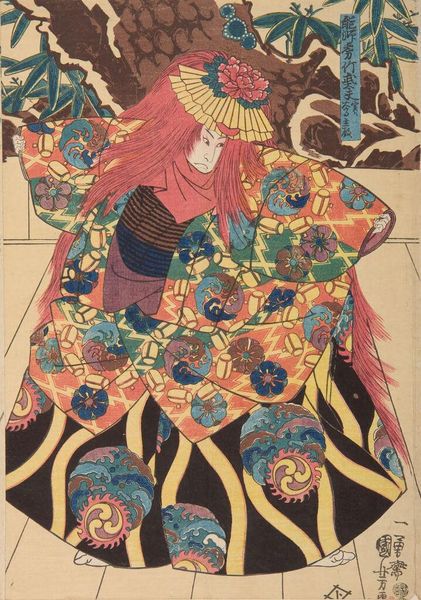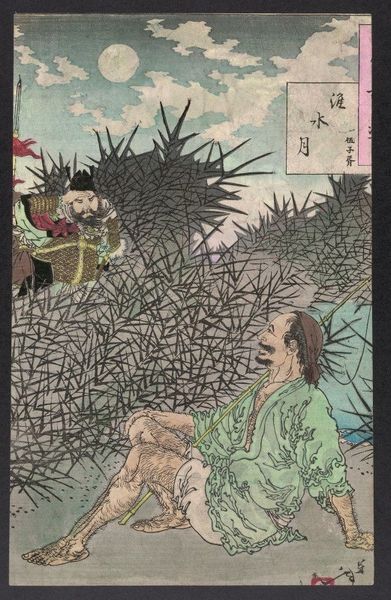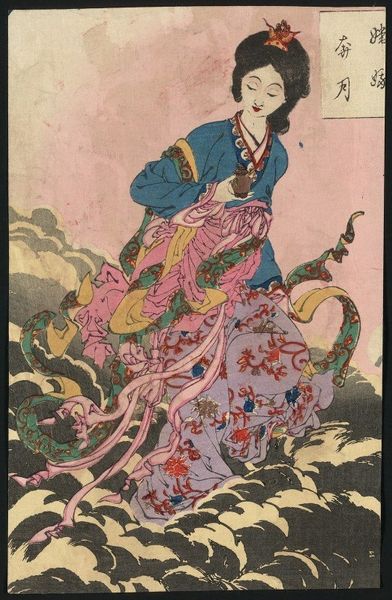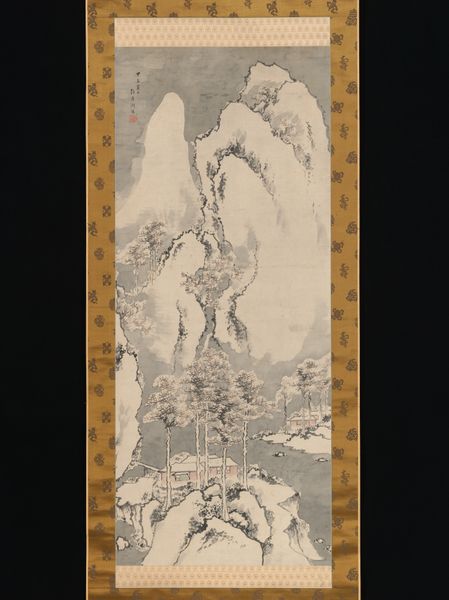
Copyright: Public Domain: Artvee
Tsukioka Yoshitoshi created this woodblock print, titled “Tada no Manchū,” in Japan sometime before his death in 1892. Here we see a warrior on horseback, bow drawn, facing off against a dragon rising from the sea amid swirling clouds. The image draws upon established visual codes to communicate meaning. Dragons, for example, frequently appear in Japanese art and folklore, and are often associated with natural forces, particularly storms and the sea. But Yoshitoshi’s picture also seems to comment on the social structures of his time. The warrior’s garb signifies his status and class. Note the small green square at the lower left, which contains Japanese text, a historical record of the events that inspired the artwork. It gives context to the scene that Yoshitoshi depicts, the warrior is known for subduing the dragon, demonstrating his strength and control over the natural world. Understanding this print requires research, a knowledge of Japanese history and folklore, and an understanding of the institutions and social structures that shaped its production.
Comments
No comments
Be the first to comment and join the conversation on the ultimate creative platform.
